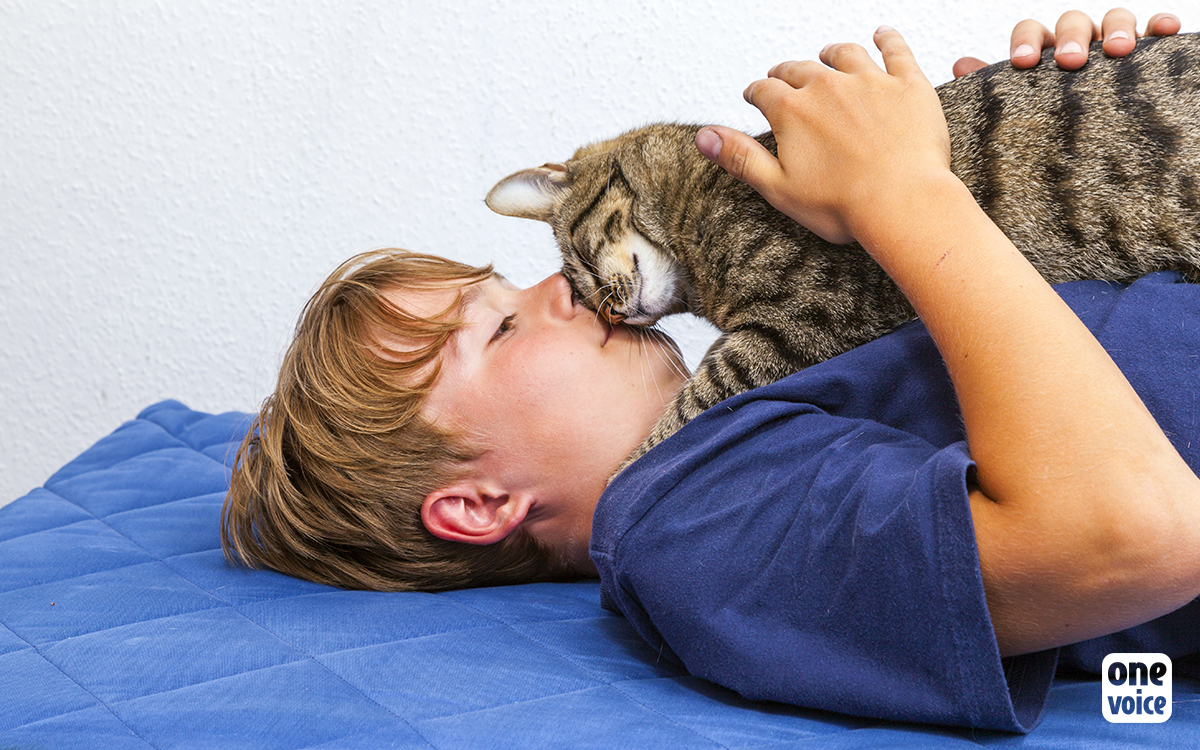

Evidence about the Link: New initiatives in the UK
Since 2001, the National Society for the Prevention of Cruelty to Children (NSPCC) and the Royal Society for the Prevention of Cruelty to Animals (RSPCA) have been working together on the issue of the Link. Together with other organizations pursuing similar objectives, such as the British Veterinary Association (BVA), they form the Links Group1, which is affiliated with the “National Link Coalition”.
“The mission of the Link Groups is to promote the well-being and safety of children, animals and vulnerable adults in order to protect them from violence and abuse.”
The main results from the Link Groups to date are as follows:
- More referencing between the different organisations
- The first ever law cases won in non-accidental injury cases for the RSPCA
- The first ever trial won in a non-accidental injury case for the Scottish SPCA
- Undergraduate training in veterinary medicine
- The addition by the Royal College of Veterinary Surgeons of an appendix guide to good professional practices concerning the conditions under which it is possible to derogate from the principles of confidentiality in certain circumstances.
- Expansion of services for domestic animals
In 2003, the NSPCC published for the first time a pamphlet for child, family and animal care professionals, titled “Understanding the Links (Between) Child Abuse, Animal Abuse and Domestic Violence”.
Written on the basis from contributions to the international conference on the relationship between animal abuse and violence against humans held in 2007 at Keble College, Oxford. Also with the backing of the Oxford Centre for Animal Ethics, the The Link Between Animal Abuse and Human Violence, which has been published by Andrew Linzey, has become a reference publication for global research aimed at a better understanding between the relationship of animal abuse and that of violence against humans2.
In 2018, new initiatives were launched. The link between animal abuse and violence against humans is now indisputable, but the application of this concept in Europe remains practically non-existent. The Royal Society for the Prevention of Cruelty to Animals (RSPCA) now reports animal abuse cases when there is a suspicion of associated child abuse. Of these reports, 86% resulted in the identification of child protection problems previously overlooked by the authorities.
“Protocols (formal) using a risk assessment checklist” are emerging, which could significantly increase the number of reports. Considering that the RSPCA received 129,000 reports last year, the potential for discovering “hidden” abuse cases with an optimized reporting process across England and Wales is considerable. This initiative has drawn the attention of the College of Policing, whose assessment of the risk of domestic violence, harassment or honour-based violence (Domestic Abuse, Stalking and Honour Based Violence, or DASH) is available to all front-line police officers. The crime prevention department of the UK National Crime Agency also expressed interest in this initiative.
Local adult and child safety boards are now working to provide a more comprehensive second-level investigation in response to the risk assessment checklists managed by first responders. This is essential, given that first responders have limited opportunities to conduct comprehensive assessments, while these specialist groups have the necessary authority and competence.
Identification of interhuman violence and mistreatment: Relay procedure between the first two levels of intervention
Referral process for the first responder in an animal abuse case
The first responder investigates a case of animal abuse.
Intuitive checklist and evaluation
- Criteria fulfilled: reporting to the authorities responsible for the protection of children and
adults for a second level assessment
- Criteria not met: no subsequent action
Second level assessment
- Guilty party identified
- Proceedings
- Safeguard
- Response to vulnerability
Other organization
Needs assessment
Sources
1www.thelinksgroup.org.uk
2Brighton, Royaume-Uni, et Portland, États-Unis : Sussex Academic Press, 2009. Publié en France par One Voice en 2012 sous le titre “Violence sur les animaux et les humains… Le Lien”